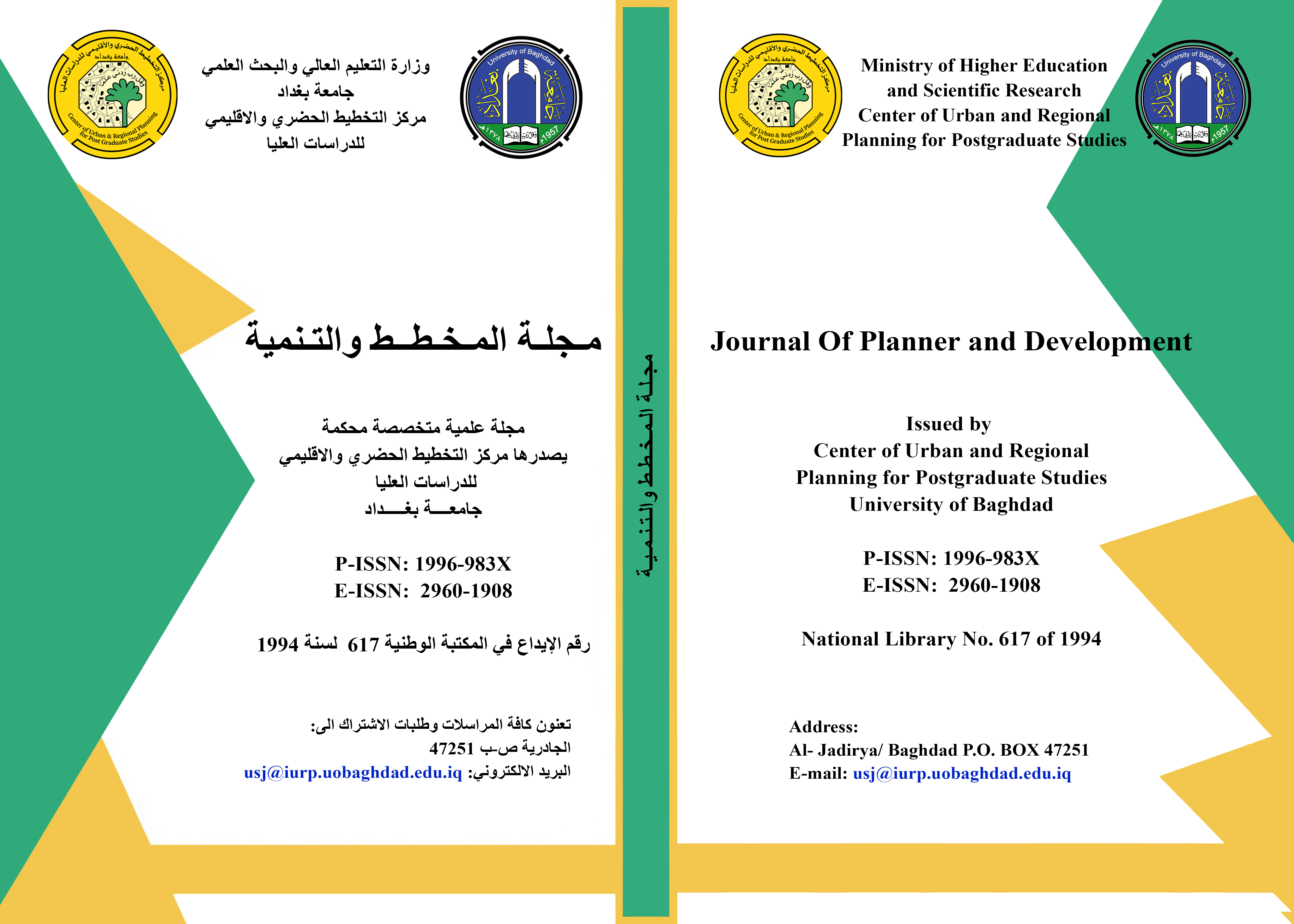Abstract
Iraq is considered the origin of civilization first colonies have been cited in its northern parts , when the first attempt in agriculture and animal breeding were began ,and the cave , were taken as houses. That time the first agricultural colony were colonized in Kirkuk and Mussel . There colonies have been developed to be villages which had another activities in addition to the main activity which was agriculture . The distribution without any administrative planning . Lately , the stochastic distribution starting to disappear due to the planning of cities and their to rural surrounding. This study is involved in the analysis of the patterns of the location distribution of the villages , and the form that taken by the village itself . due to the distribution of formers houses The last two decades witnessed big changes in Iraq . There changes imposed a high transference , between rural colonies and urban centers , this transference affect on the forms and sized of these colonies and their distribution patterns .This study also involved in the studying of the reasons of this transferences and their direction . The aim is to limit the colonies expanding or decreasing , which effect the facilities of infrastructure and the public services .The conclusion of the study is that the Iraqi villages are still depending an stochastic distribution of locations , and the distribution of public services is depending on their importance . The study is recommended that to improve the public services in the villages according to their population weight , types of economic activities , applying a policy of location development as a rule to the socio-economic complementary within the exchange relation of each location.
Abstract
يعتبر العراق بحق مهد الحضارات ففي ربوع أقسامه الشمالية كانت أولى بوادر الاستقرار ، عندما بدأ الإنسان محاولاته في الزراعة وتدجين الحيوانات والسكن في كهوف هذه المناطق ، وذلك في الالف التاسع قبل الميلاد ، فنشأت المستقرات الزراعية الاولى في اطراف مدينة كركوك و الموصل والتي تطورت فيما بعد الى القرى وتعددت انشطتها اضافة الى النشاط الرئيسي (الزراعة) ,كان توزيع القرى ونسيجها الداخلي آنذاك طبيعيا و بدون تخطيط نظري او تدخل اداري مسبق و الشكل الاساسي لتجمعها كان حول فعاليات معينة فاخذت شكلا عفويا تلقائيا , بدأت هذه العفوية تختفي تدريجيا نتيجة لظهور المخططات النظامية للمدن و اقاليمها الريفية . تهتم هذه الدراسة بتحليل انماط التوزيع المكاني للقرى والشكل الذي تتخذه القرى ذاتها نتيجة لتوزيع مساكن الفلاحين فيها ، ونظراً للتغيرات الكبيرة التي شهدها القطر العراقي في العقدين الماضيين ظهرت حركة قوية نوعاما بين المستقرات الريفية من جهة والمراكز الحضرية القريبة من جهة اخرى، أثرت هذه الحركة على أشكال وأحجام تلك المستقرات وكذلك على نمط توزيعها ، ومن هنا فان البحث يهتم ايضاً باسباب هذه الحركة واتجاهها للحد من توسع بعض المستقرات او تقلص البعض الاخر مما يؤثر على طرق السيطرة عليها من ناحية توزيع البنى التحتية وايصال شبكات الطرق والمواصلات وغيرها من الخدمات الاخرى .انتهى البحث الى بعض الاستنتاجات اهمها ان القرى في الاقاليم الريفية العراقية لازالت تسلك النمط العشوائي في توزيعها المكاني كما ان توزيع الخدمات العامة في هذه القرى يتوقف على اهميتها ومكانتها في الاقليم .اوصى البحث بتنمية الخدمات العامة في القرى تبعاً لكثافتها السكانية ، وكذلك اتباع سياسة التنمية المكانية للقرى الريفية ضمن الاقاليم المختلفة كاسلوب لتكامل الانشطة الاقتصادية والاجتماعية ولاستغلال الارض ضمن العلاقات المتبادلة بين هذه القرى في الحيز المكاني الواحد
